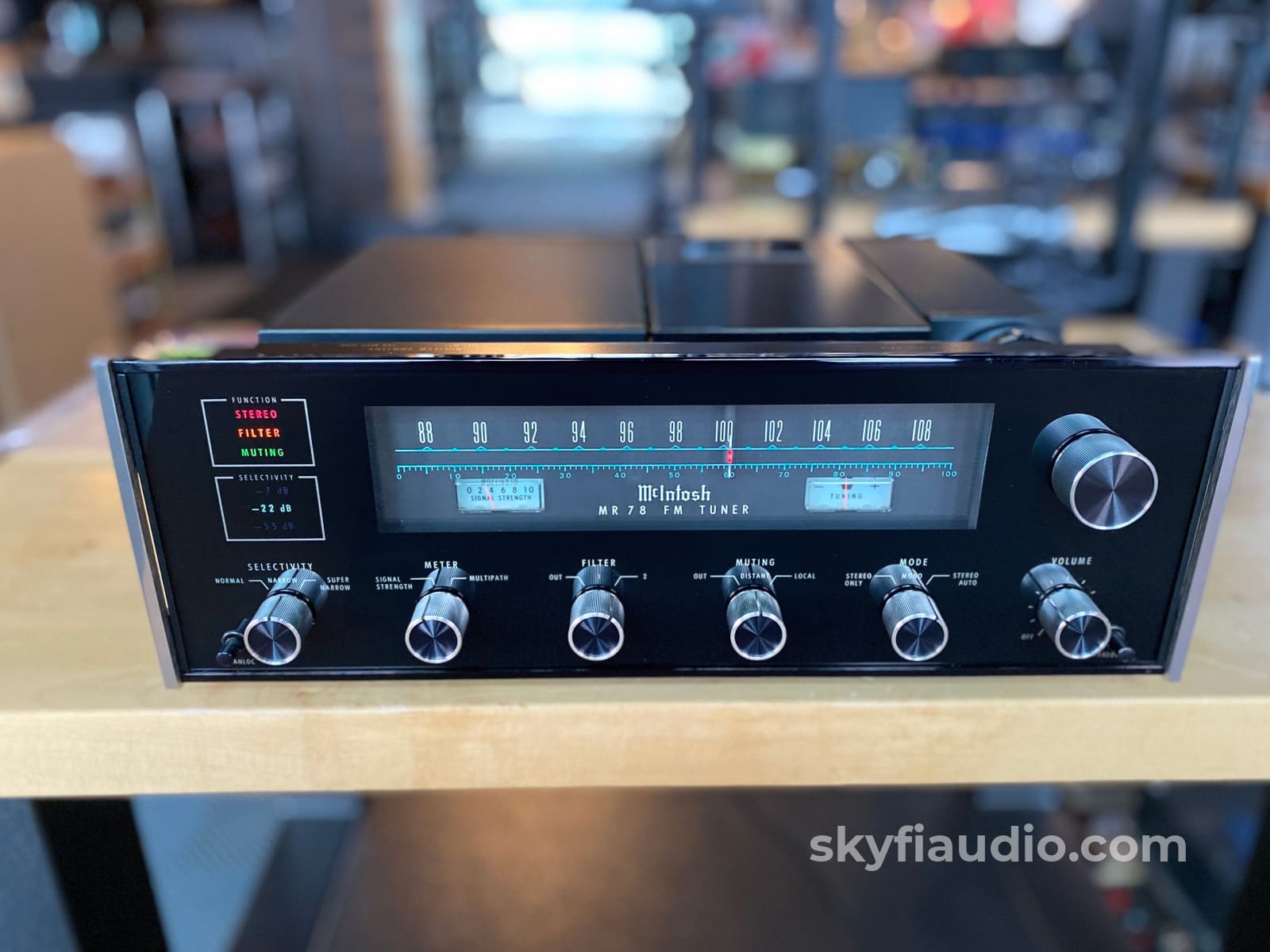
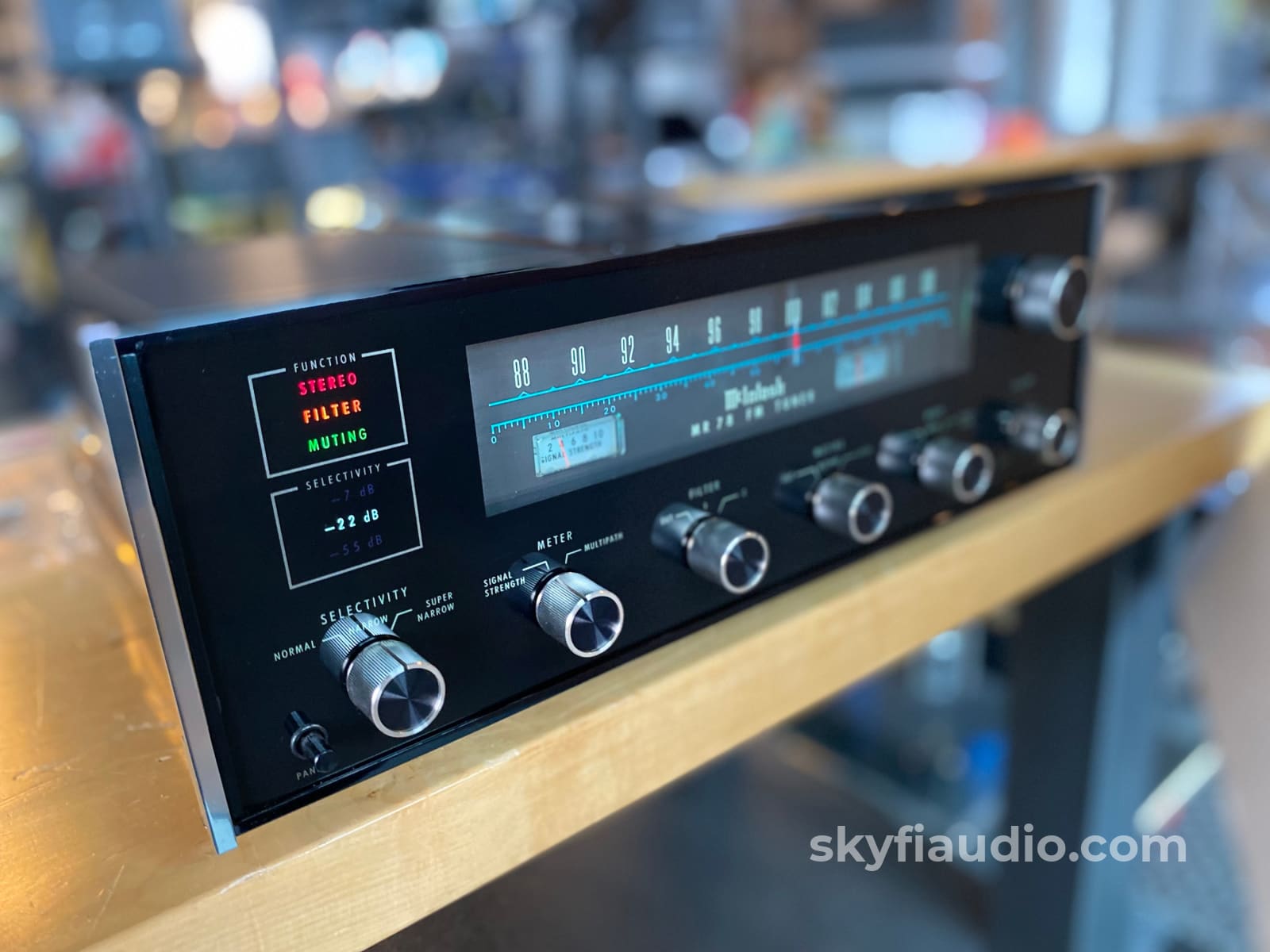
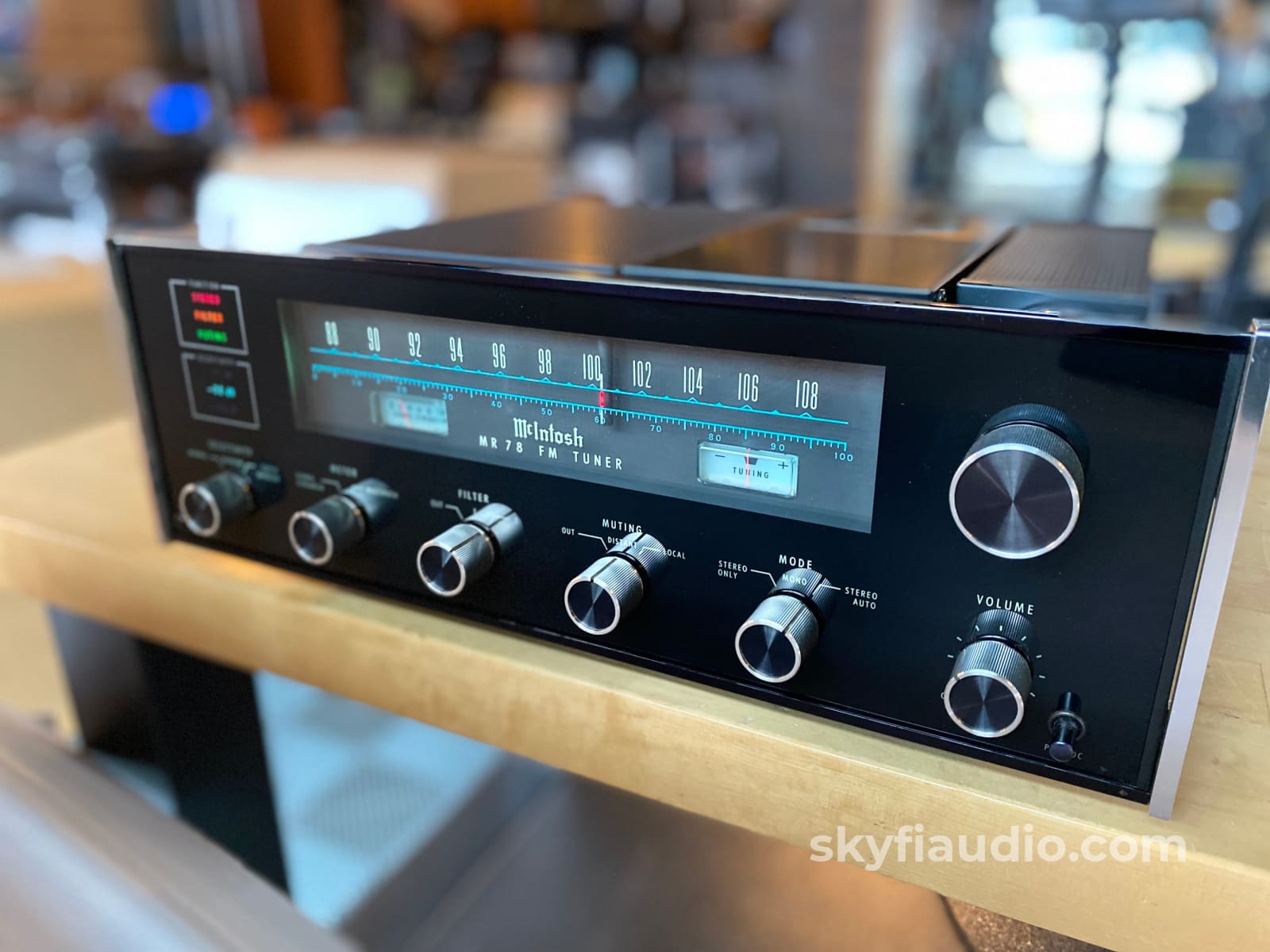
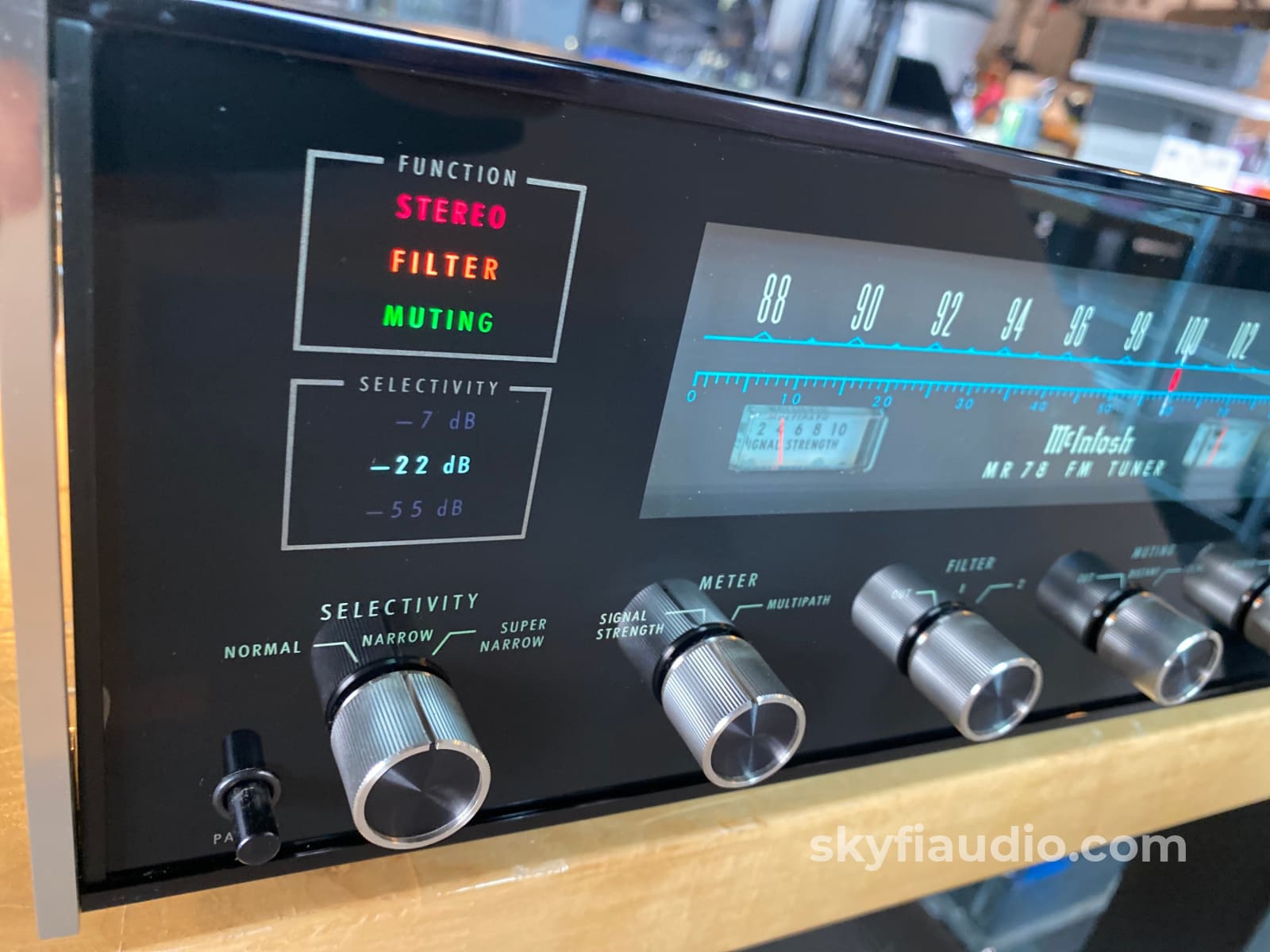
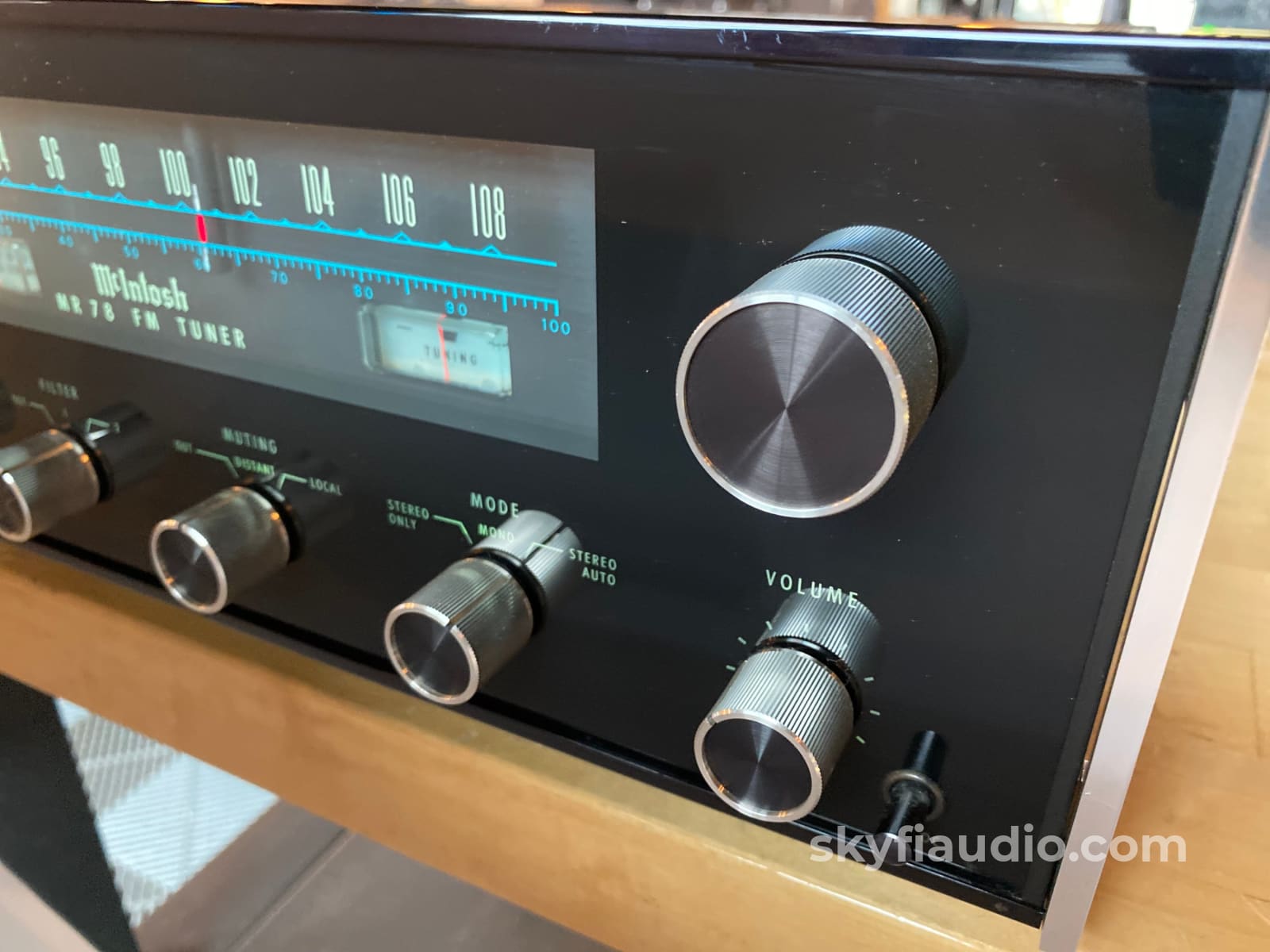
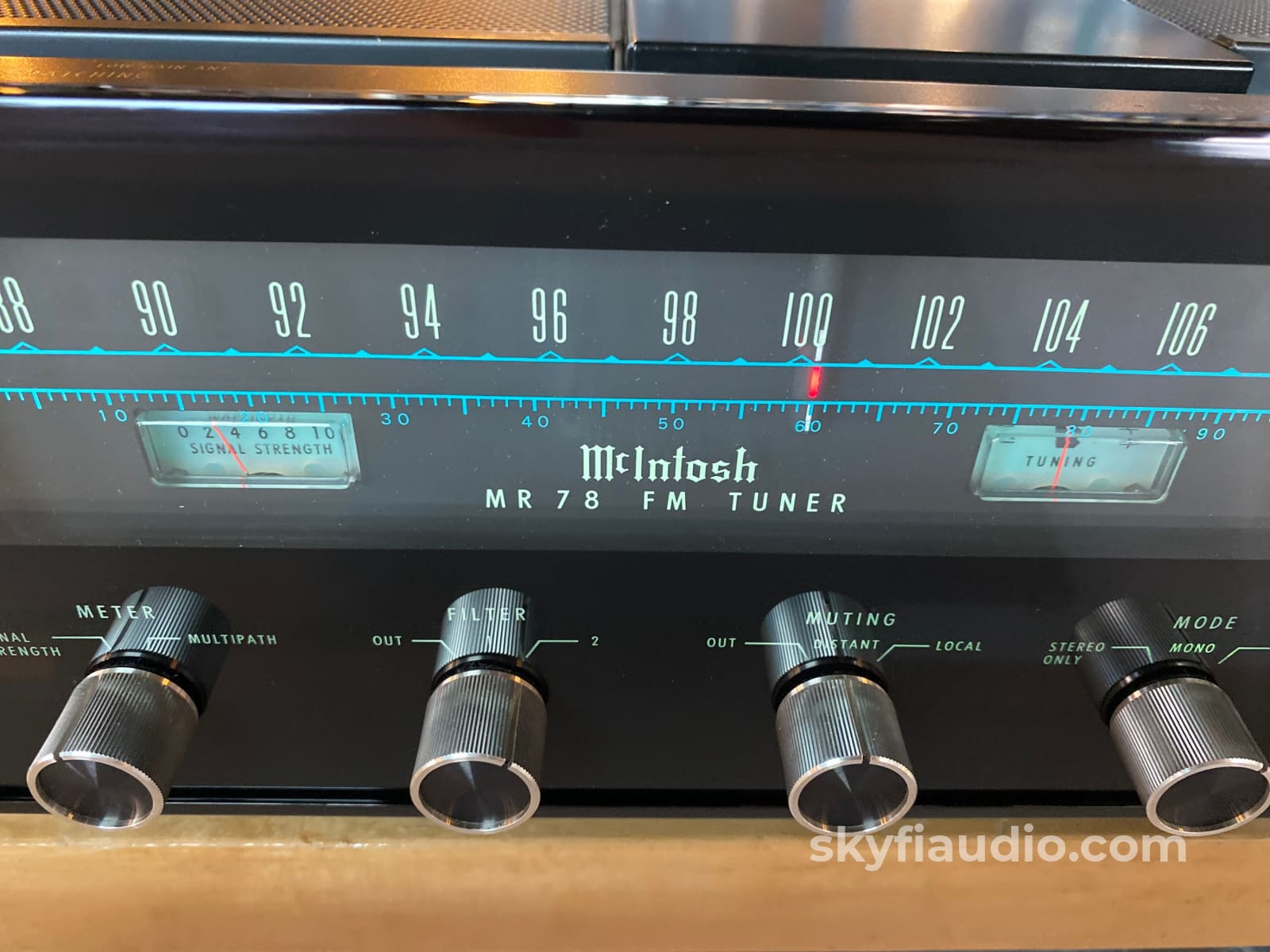
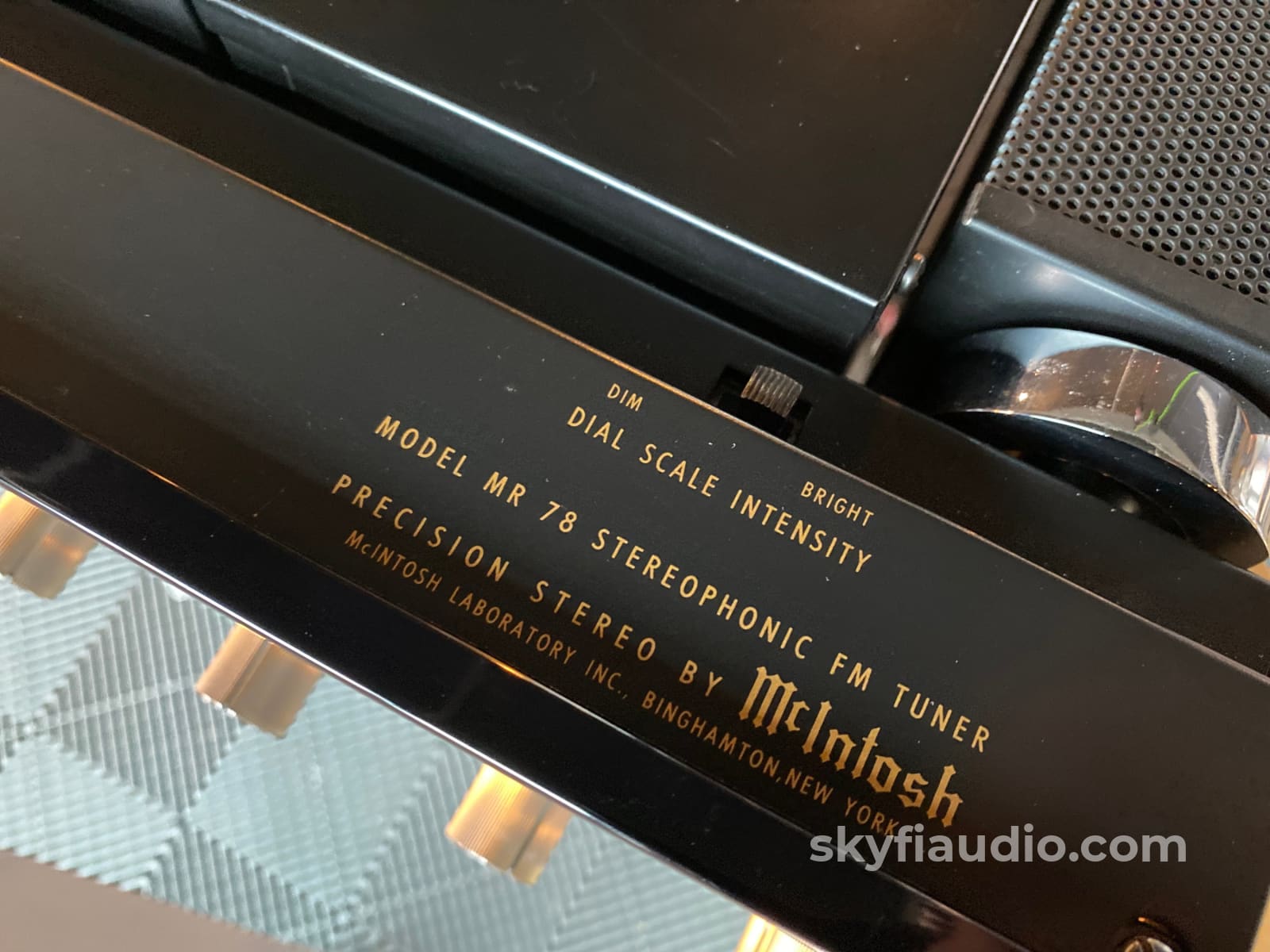
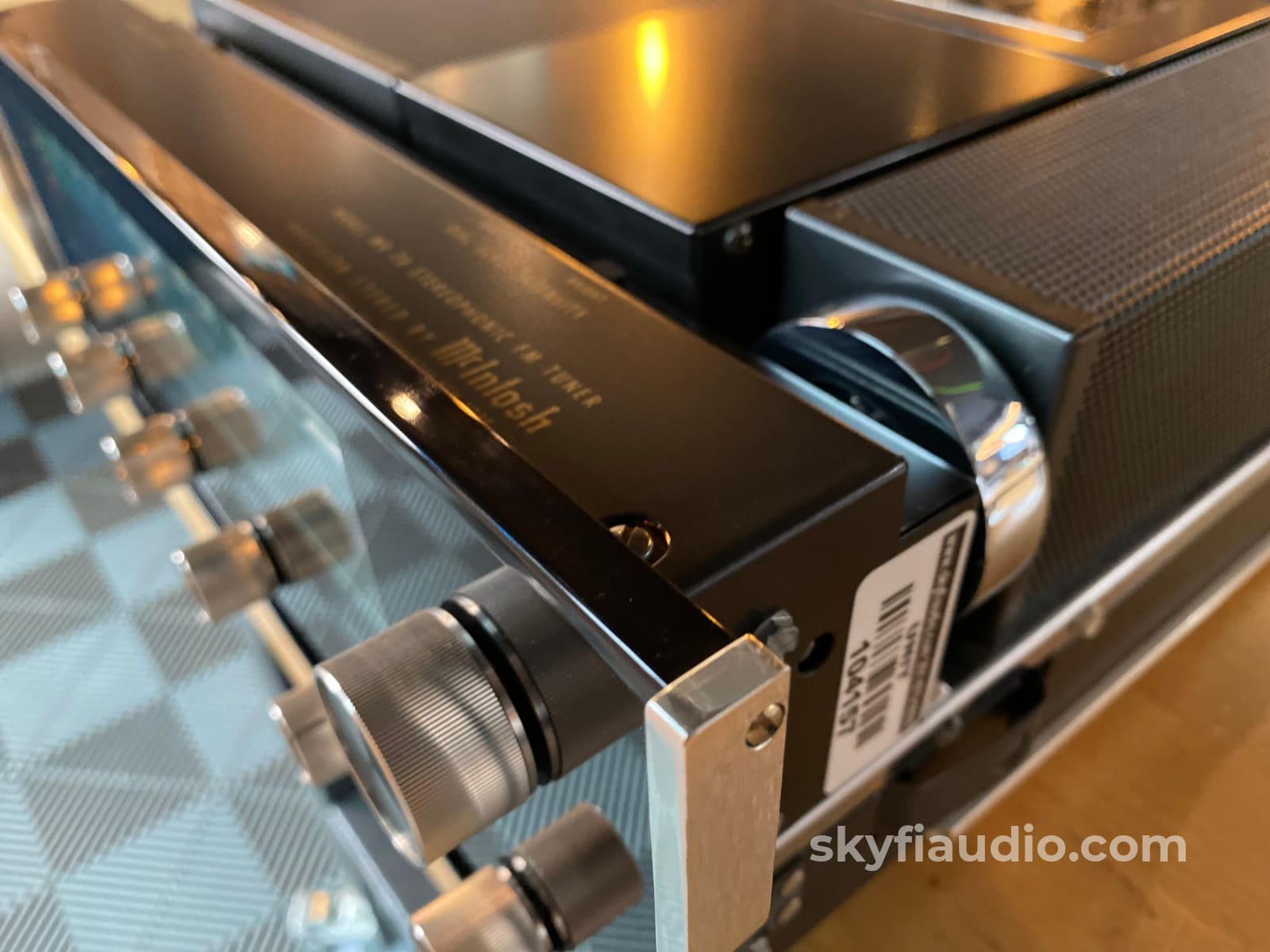
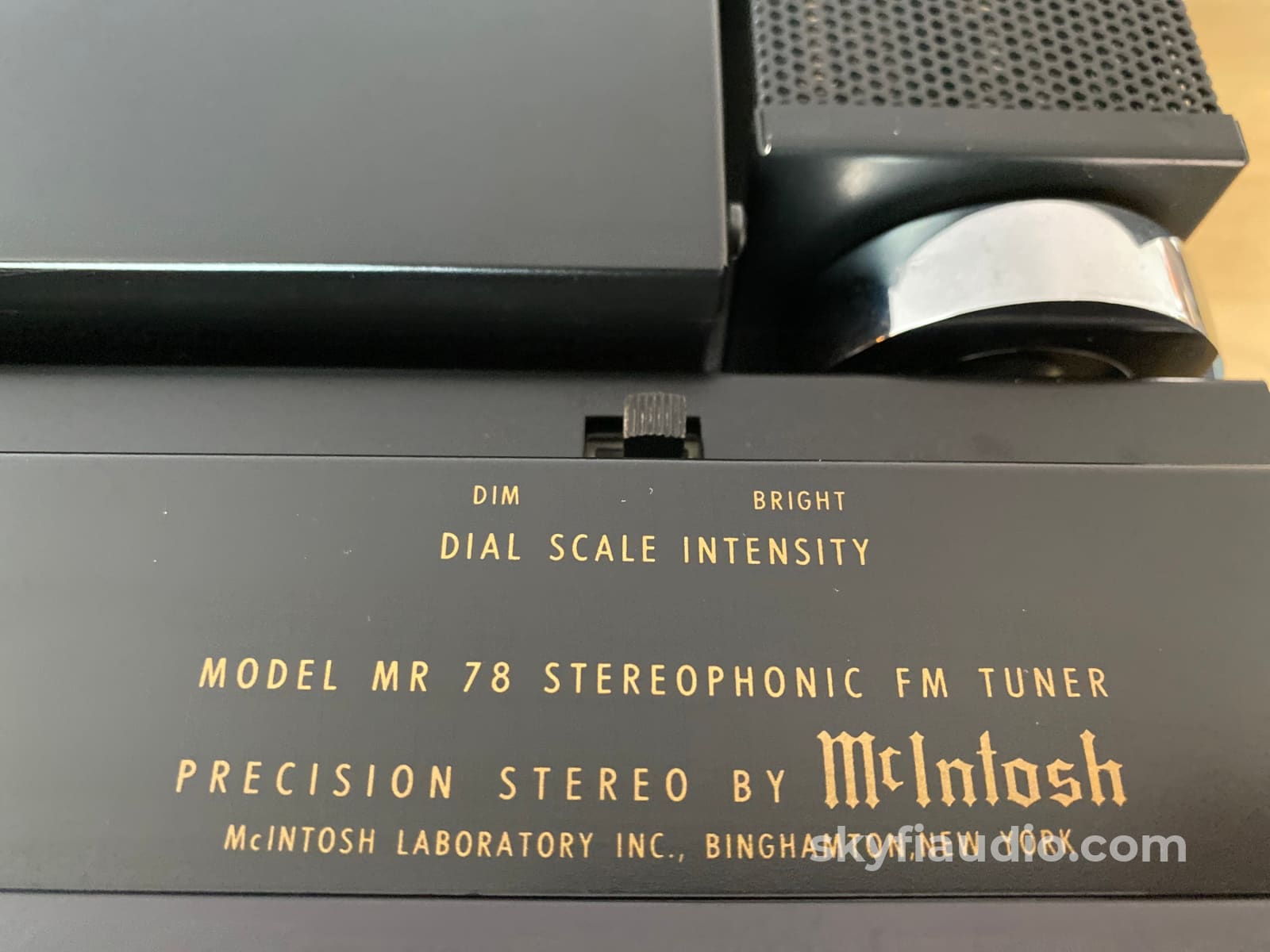
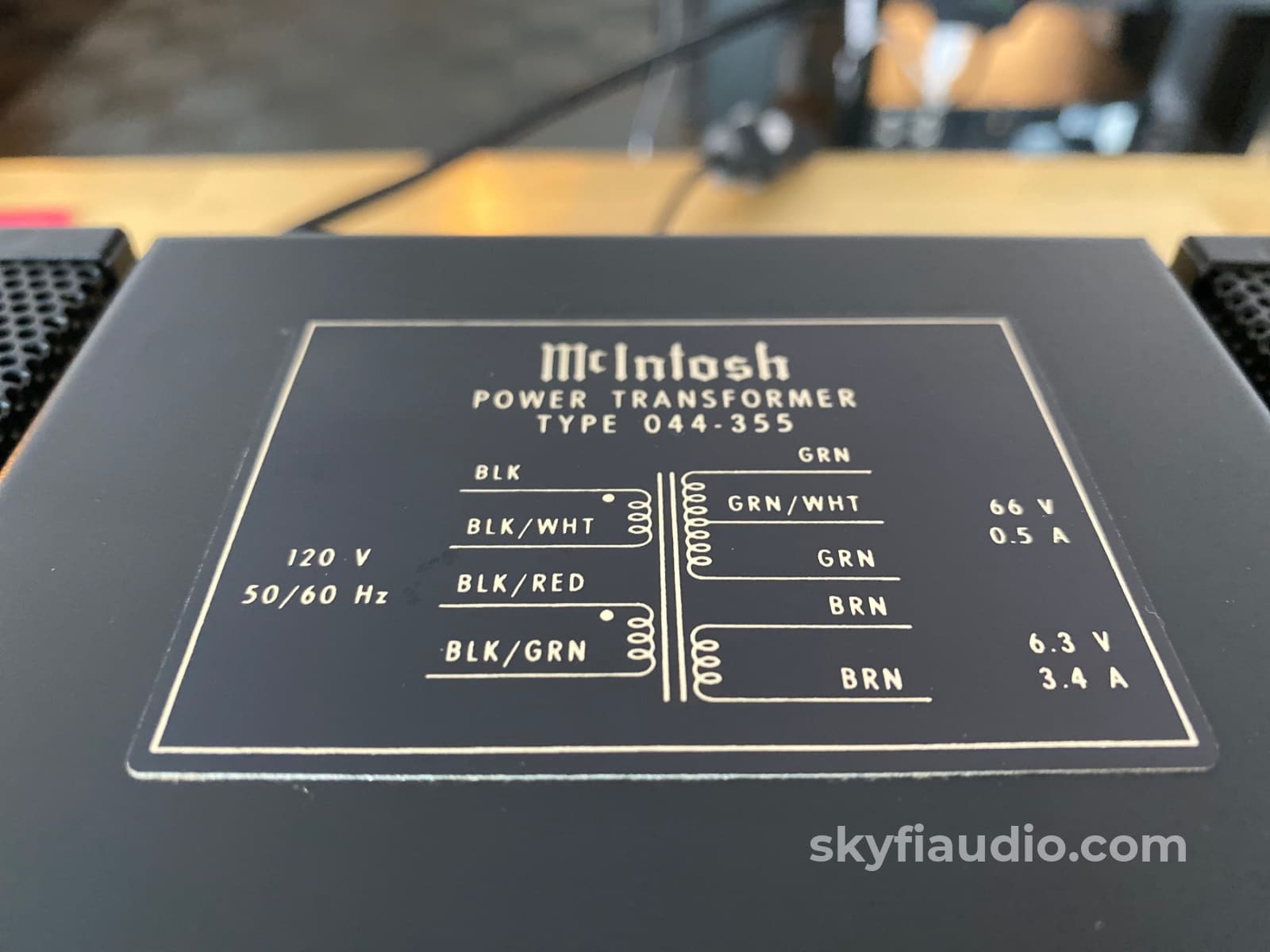
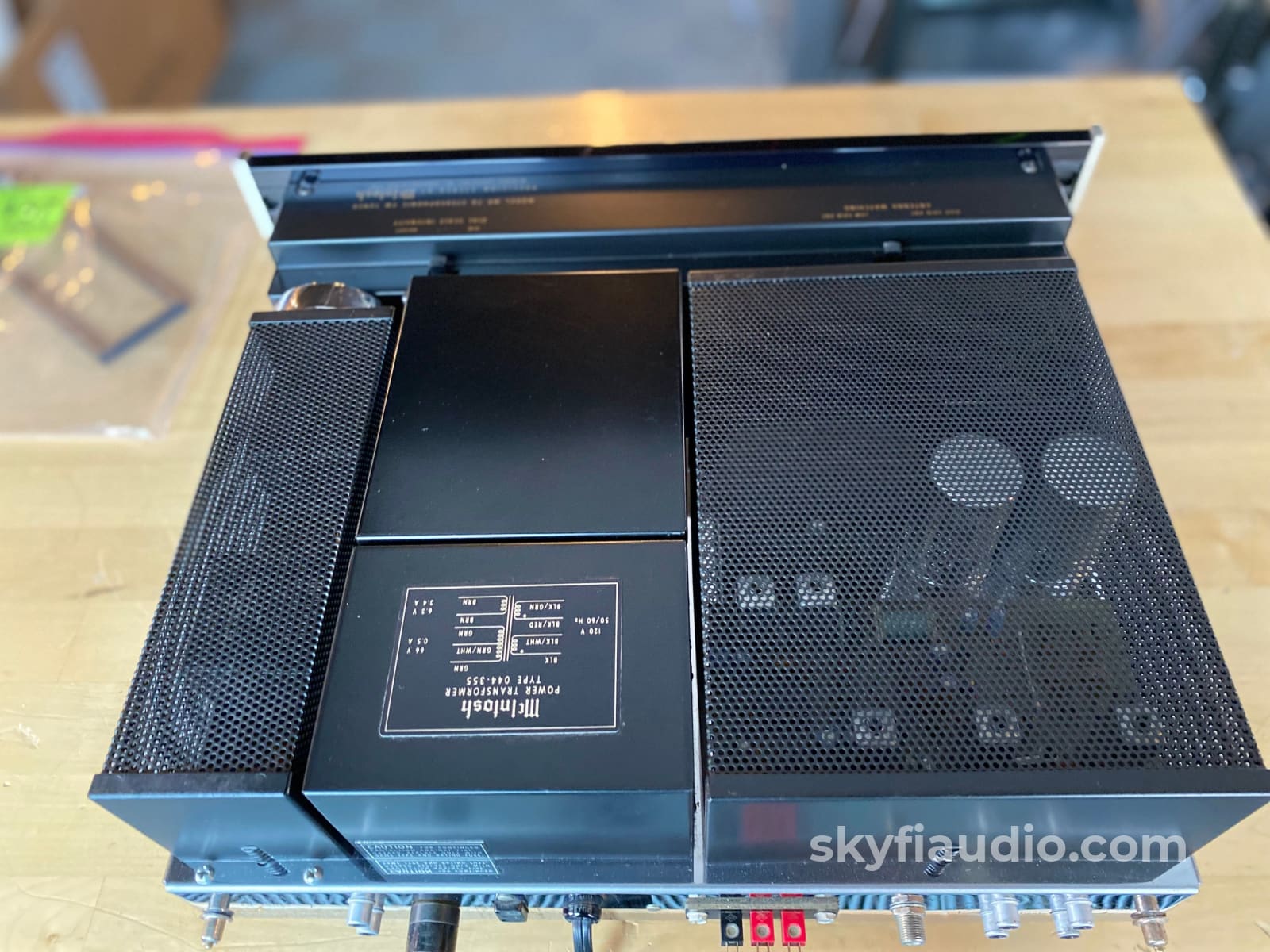
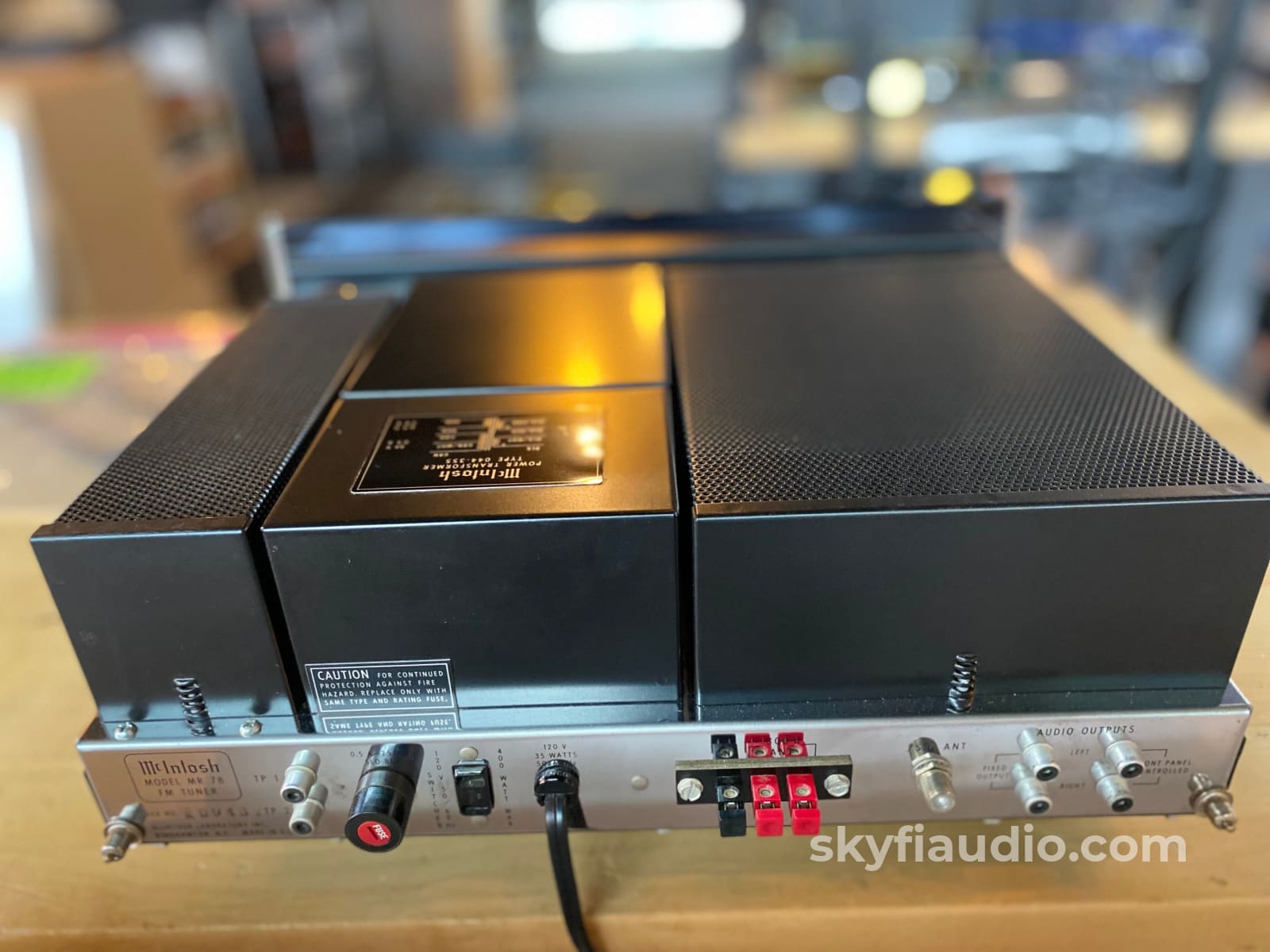
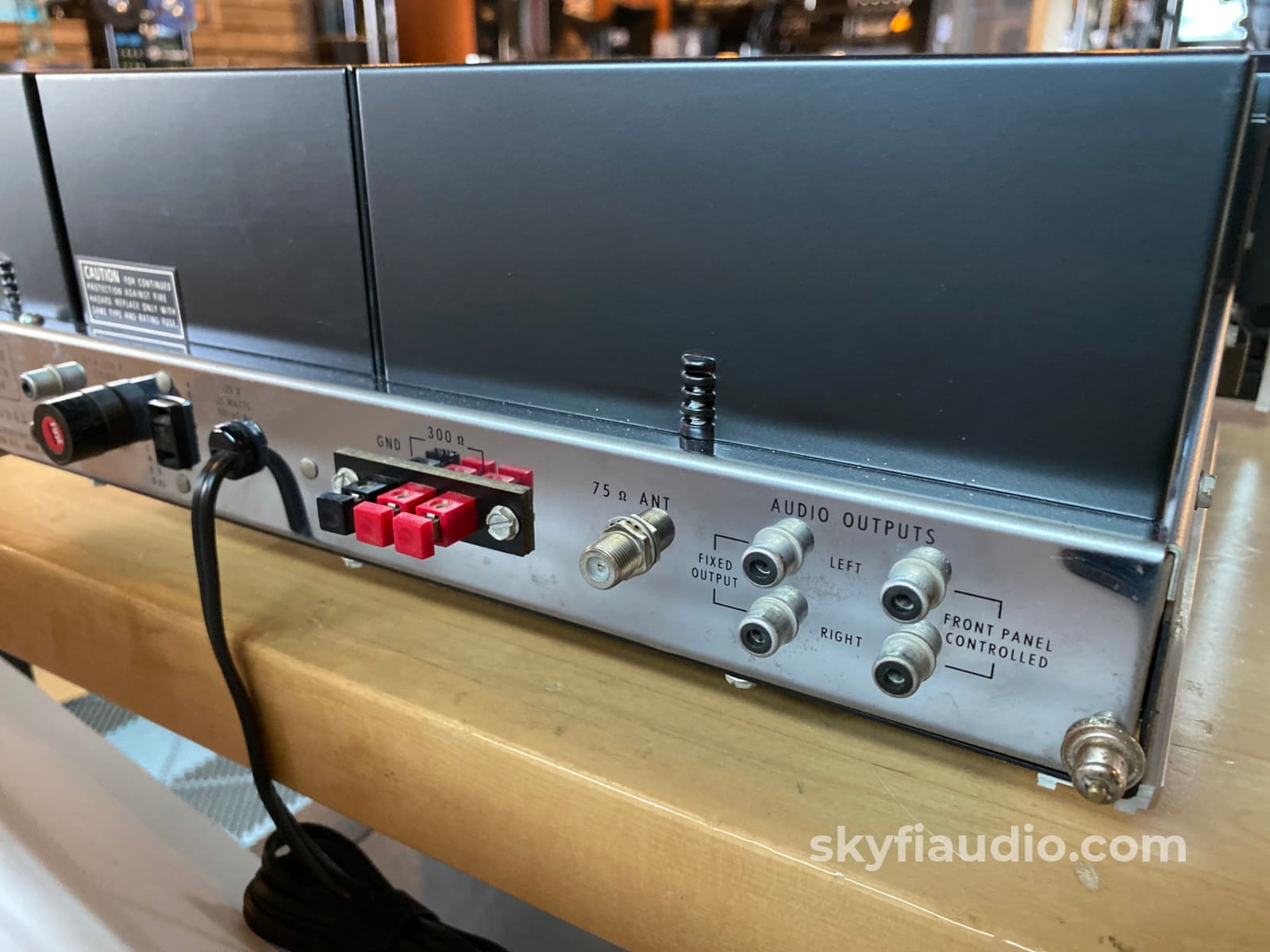
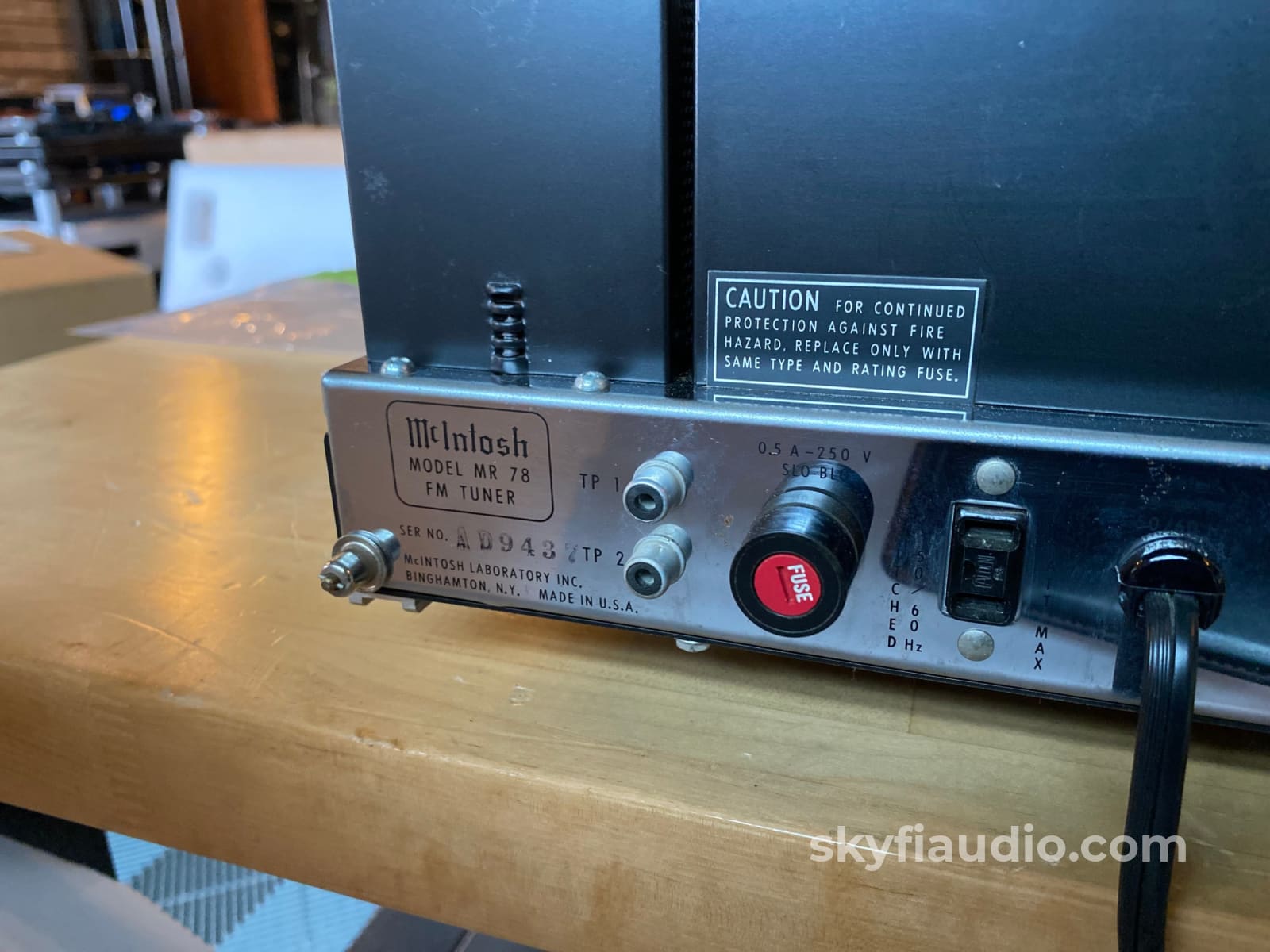
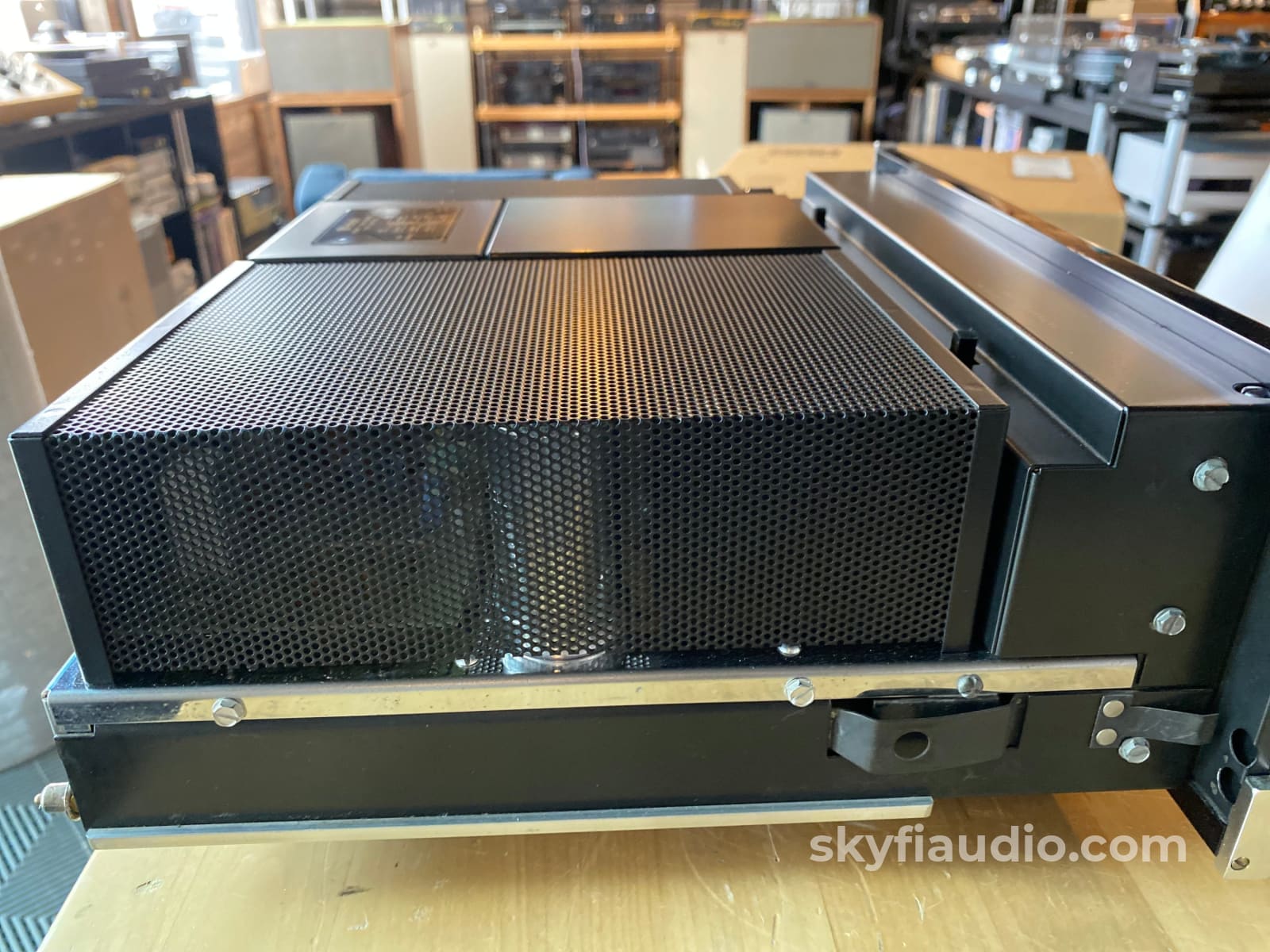
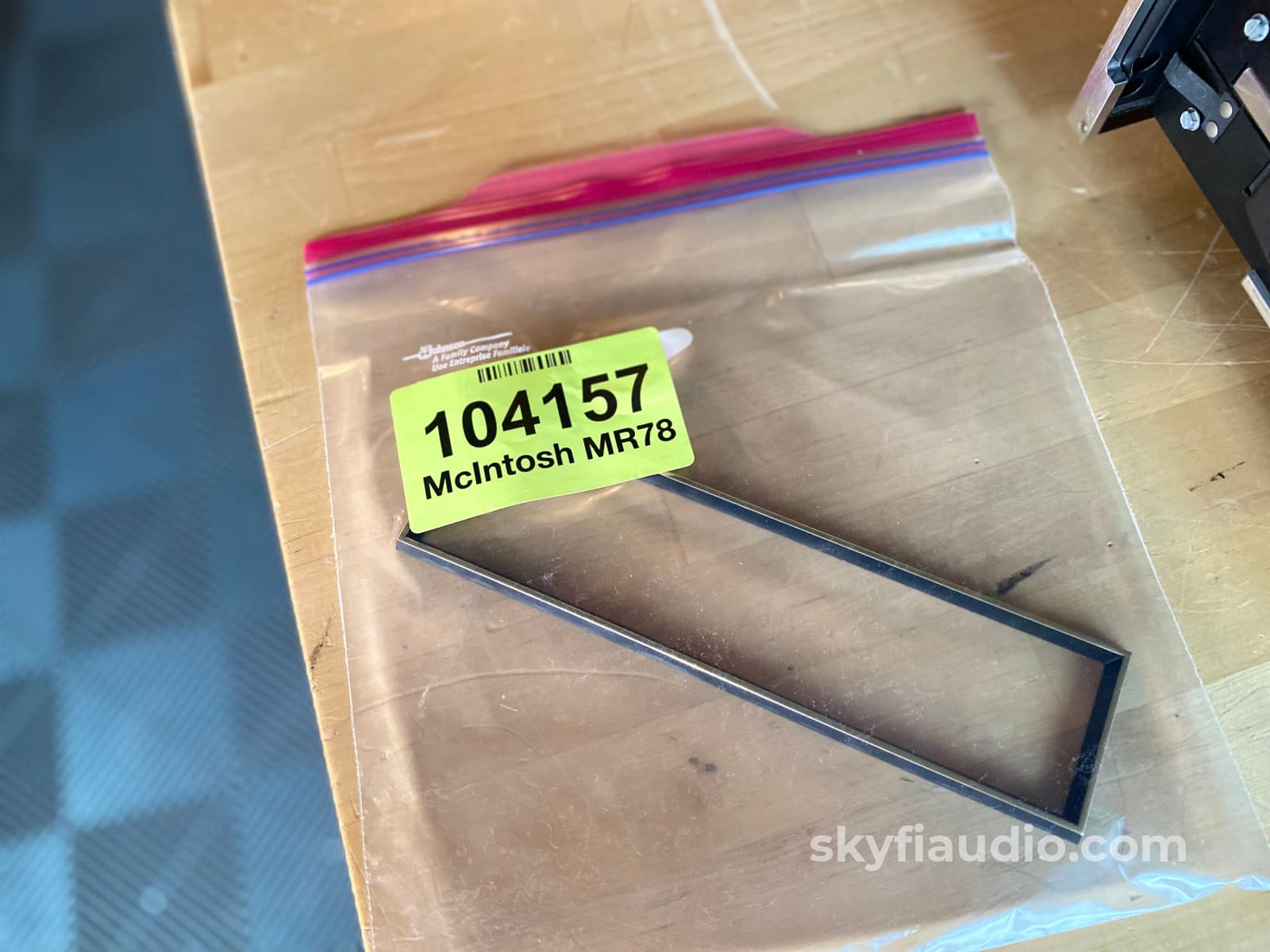
McIntosh MR78 Analog Tuner - The Best from McIntosh - Back in Stock!
Free Shipping on Most Electronics - Excludes Speakers and Items Requiring Freight - Contiguous U.S. Only
Pickup currently unavailable at SkyFi 479

McIntosh MR78 Analog Tuner - The Best from McIntosh - Back in Stock!
SkyFi 479
479 South Broad Street
Glen Rock NJ 07452
United States
Many believe this to be the best tuner EVER made.
In our opinion it's definitely in the top five.
Tested, lightly serviced, and working superbly.
New glass makes the front of the unit look even better. We can also supply a perfectly fitting McIntosh wood cabinet for the complete vintage look, just contact us for details/availability.
This MR78 will ship in an authentic McIntosh double-box.
SkyFi Cosmetic Notes:
• The front glass faceplate was replaced with an official McIntosh factory replacement.
• The front plastic raised dial bezel is not installed as many prefer the more modern look without. Let us know if you would like us to carefully secure it to the front faceplate before shipping. Otherwise we'll include it in the box.
The Consumer Electronics Hall of Fame: McIntosh MR 78 Tuner:
"A young engineering genius used a computer to design a filter and the result was the greatest FM tuner ever built"
That engineering genius was Richard Modafferi, and if you reverse his initials you get the model prefix for a host of McIntosh Tuners...
Click below to add our recommended matching cables from Kimber Kable, all brand new as SkyFi is an official Kimber dealer.
Kimber Kable - RCA Interconnects - Better
Kimber Kable - RCA Interconnects - Best
Please see our photos for full specifications, or the manual linked below.
McIntosh MR78 Tuner Owner's Manual
From the IEEE Spectrum Website:
Richard Modafferi was a senior engineer at McIntosh Laboratory from 1968 to 1974. His first stab at a new tuner that could do better was the MR 77. That model, introduced in 1970, was acclaimed among audiophiles—and it was the subject of an article by Modafferi in the November 1970, issue of IEEE Transactions on Broadcast and Television Receivers. And then Modafferi outdid himself with the MR 78 tuner, which came out in 1972.
The MR 78’s distinction was a new intermediate frequency filter, the culmination of a design that Modafferi had begun working on as a graduate student at the Newark College of Engineering (now part of the New Jersey Institute of Technology) in the mid-1960s.
He dubbed it the Rimo filter (a concatenation of the first two letters of his first and last name). In a superheterodyne radio receiver, which all FM receivers are, the incoming signal is mixed with that of a local oscillator to produce an intermediate frequency (IF) that is lower than that of the carrier frequency of the received signal. There are several reasons for doing this. A really big one is that the lower value of this IF makes it easier to filter out nearby sources of interference.
Basically, Modafferi’s Rimo took a leap beyond existing IF filters by applying a computer to fine-tune the filter’s frequency response, and also by minimizing “intermodulation distortion,” which plagued IF filters at the time.
The SkyFi Testing Process for Tuners:
We start with a visual inspection of all internal components to make sure that there are no signs of heat stress or damage. Capacitors are checked for telltale signs of predictive failure including bulging, shrunken wrappers, or physical leakage. We also inspect the PCBs for discoloration from resistors or transistors that may have been running hot. On vintage units we often spot check select capacitors for value and ESR. Vintage analog tuners also have moving parts related to the tuning gang and dial string. These parts are inspected for smooth operation.
If the unit passes visual inspection it is bench tested for a handful of key performance parameters using a Sencore SG80 AM/FM Stereo Analyzer. The SG80 allows us to “simulate” an ideal radio station using precision test signals instead of music. This device, in conjunction with an oscilloscope allows us to properly evaluate the following parameters:
1. AM Reception (Where Applicable)
2. FM Mono Reception & Tuning Meter Function
3. FM MPX Reception (Stereo)
4. Dial Tracking - How accurately the tuner dial or display indicates the actual frequency of the broadcast being received.
5. Stereo Separation - A properly working stereo tuner will have minimal crosstalk between the left and right channel.
6. Sensitivity & Signal Strength Meter Function - By lowering the output of the SG80 we can simulate weak stations and determine how well the tuner will be able to pull in weak distant stations. This adjustment also helps us verify signal strength meter function.
If the tuner has acceptable performance related to the parameters above we connect the unit for listening tests with a simple dipole antenna. We listen for audio reproduction quality of local stations and evaluate how many stations the tuner can receive while we sweep through the dial. We are looking to verify that the tuner can decode stereo on strong local broadcasts and pick up a wide variety of local stations at the bottom, middle, and top of the frequency band. At this point we also test convenience features such as muting, filters, built in oscilloscope function, etc.
We finish up with an extended listening test on our long term test rig. We tune in a strong local station and monitor for drift over a 2-3 hour period.
|
Item |
Included |
|
McIntosh Wood Cabinet |
Yes - Included |
|
Manual |
No - Not Included (Online) |
|
Remote |
Not Applicable |
|
Cables |
Yes - Power Only |
|
Physical Condition (Info Here) |
8 / 10 |
|
Working Condition |
10 / 10 |
Choose options
